Trudy J. Morgan-Cole's Blog, page 30
February 12, 2022
To Paradise, by Hanya Yanagihara

It’s incredibly rare for me not to finish a book. Most books I start, I either like or at least am interested in enough to push through to the end. But I read about half of To Paradise and then made a decision, after much thought, not to finish it. It’s not because the book is bad, though.
Yanagihara’s last book was A Little Life, which I did finish, and enjoyed, and had a lot to say about. This one is very different. It is, in fact, three novellas, each of which can stand completely alone without reference to the others. The only links between them are a few loose thematic connections, a couple of shared locations, and some character names that are in common from one story to the next (no suggestion, though, that the characters are related or descended from one another). Plotwise, there is no link — nothing in any of the stories affects any of the others, which is why I felt OK with stopping after book 2.
The first story, set in 1893, was my favourite, as it was set in a kind of alternate-history version of the US which I would love to have explored further. A gender-bending riff on a Henry James story, this section, titled “Washington Square,” takes place in a world where New York is one of the “Free States” which are independent from the United States and its “Colonies” (the Southern states). In the Free States, men and women are fully equal, and same-sex relationships are as normal and accepted as opposite-sex ones. But its no Paradise (the idea of idealized worlds, as indicated in the title, is another common thread here); Free Staters are as capable of racism against Black and Indigenous people as other Americans, and also capable of more personal and petty sins, such as greed and deception — the sins that lie at the heart of this novella’s love story.
Book Two, set in 1993, starts in New York again – no alternate-history this time, just regular 1990s NYC where a young man and an older one are in a relationship set against the background of the AIDS crisis. Then the story abruptly shifts to Hawaii, where we learn about the origins of the young man, David, and his troubled relationship with a father descended from Hawaiian royalty. This story, too, was interesting, but I felt that neither the father nor the son character, neither the Hawaiian story nor the New York one, had a chance to fully develop before we were whisked off to Book Three.
And here is where I stopped. Because in the century-hopping format of this book, Book Three, which is the longest, is set in 2083, in an America that has been ravaged by a series of pandemics, in which civil rights have been eroded and … you know what, I just can’t. I’ve been gun-shy of dystopias for awhile now, and plague-based dystopias particularly since 2020, and I sat there looking at the last part of To Paradise and just decided … nope. No judgement on Hanya Nanagihara’s writing, which is beautifully executed as always … I just don’t have it in me to read about a near-future, plague-ravaged world right now. Knowing that while thematic threads, locations, and names from the earlier sections might recur here, plot threads would not, made it easy to lay this aside without reading the third novella.
So I can’t offer a proper review of To Paradise; I can only tell you that at the ripe old age of fifty-six, I have accepted that sometimes it’s OK not to finish every book you start. Especially if the subject matter of a book feels like it’s going to drag down your mental health at a time when we all need as little dragging-down as possible … it’s honestly OK to gently lay that one back on the shelf.
January 31, 2022
Devil House, by John Darnielle
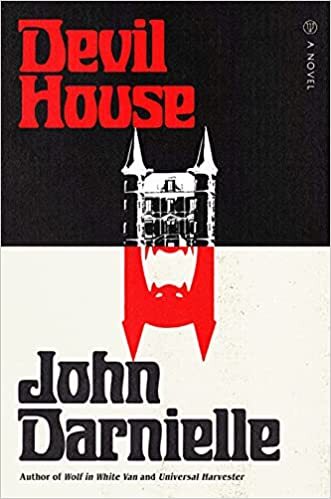
I am on record as being a huge fan of John Darnielle’s music. I’m also a fan of his fiction, with caveats. I found his first novel, Wolf in White Van, beautiful and troubling and intriguing, but I struggled with Universal Harvester — you can read my review at that link to see why I found that book also beautiful but ulimately unsatisfying. Still, I fully intended to read Devil House, Darnielle’s highly-acclaimed new novel that plays with the tropes of true crime writing and our obsession with it, when it came out on January 25.
However, after reading a few advance reviews and seeing many references to gory scenes in the novel, I wondered if I really should read this one. Obviously a crime novel (not my usual genre, but I trust Darnielle to write about it sensitively) is going to have some violence and death, but exactly how gory is it? I posted on Twitter that I kind of wanted to Darnielle to metaphorically take me by the hand and let me know if it was OK for me, as a person with extremely low gore tolerance*, to read this book. Minutes later, I was thrilled to receive a response:
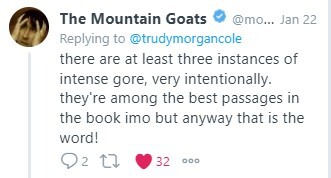
The author’s assessment is accurate — there are three scenes where acts of violence are described in what could be considered gory detail, and I will admit that I kind of let my eyes slide over those parts a bit. They are important, but the book is not really about gore, or about murder, and it doesn’t dwell on or revel in those scenes in any gratuitous way. Instead, it’s about how we think about murder, how we talk about it, about our obsession with “true crime” and why it’s never really “true.”
It’s also about private property and the concept of “home,” which is another whole fascinating layer to the book.
Let me start with an attempt at a plot summary: Devil House is, to some extent, about a true crime writer called Gage Chandler who is writing about two grisly murders that took place in the 1980s in Milpitas, California. As part of his research process, which involves gaining access in various ways to the scenes of the crimes he writes about, Chandler buys and moves into the titular “Devil House,” a commercial property which has been recently renovated into a home. He’s living there in 2006, more than 20 years after two people were brutally murdered in what was then an abandoned porn shop, trying to recreate the atmosphere and dig into the story behind these murders about which relatively little is known (no-one was ever charged in the deaths).
We also learn that Gage made his name as a true crime writer with his first book about a 1972 double-homicide in another California town, murders committed by a mild-mannered schoolteacher known as the “White Witch of Morro Bay.” Both the Morro Bay “witch” murders and the Milpitas porn-shop murders have elements that suggest there may be some occult, dark magic, Satanic-ritual element to the deaths — but Gage’s research suggests that in both cases this is mere window-dressing, visual elements seized on by the press to create a sensational narrative in the “Satanic panic” years. So what’s the real story?
Well, if you’ve followed John Darnielle’s other books (or even my reviews above so that you’re going on this journey along with me), you’ll know by now that finding out the “real story” is not the point here. This is not a mystery where we’re on board to learn whodunit. There are substantial sections of this novel that are about both the Morro Bay and the Milpitas murders, both apparently narrated in the voice of Gage-as-writer, but they don’t purport to tell us whodunit, or why. While one of the murders is unsolved, in the other case, it’s pretty clear who the murderer is. The “why” — why either the known murder in the Morro Bay case, or any of the suspects in the Devil House case, would kill the victims in the way they do, remains murky. As in Wolf in White Van, Darnielle is cagey on the topic of motive, suggesting that we may never fully understand why. “Motive’s overrated as an aspect of crime,” Chandler says to another narrator who steps in for the book’s final section (who pretty much is John Darnielle, inserting himself into the story as a character to talk to his creation), “sometimes people just do things, you can’t break your back bending over to find a motive.”
What Devil House is interested in probing is not the motives behind murder, but the humanity of both victims and murderers, and how that humanity is flattened not only in the immediate media reports and legal proceedings following a crime, but in all the “true crime” books and documentaries (and now, podcasts) that analyze the case long afterwards. This is the kind of writing that has made Gage Chandler famous, but when he comes to the Devil House murders, he finds he can’t write about these crimes the way he has written about others.
Two key themes really stood out to me in this novel. One is the fairly obvious one: all these people involved in any crime are (or were) real people, and caricaturing them as good guy, bad guy, innocent bystander, or whatever role we pick for them, does a disservice to the real lives they lived before the crime happened. As someone who does not enjoy reading, watching, or listening to true crime stories, I guess I’m a bit outside the “we’re all complicit in this” circle that frames a lot of people’s early response to Devil House, but it still made me think.
The other theme that is subtler but really important is the idea of home and property that I mentioned above. If you’re wondering why there are so many references to property prices and real estate and the changing landscape of small towns in the novel, if you’re confused by the fact that there’s a section in the middle that appears to be a faux-medieval legend about a king who dies in his own castle — none of this is incidental to the story. In one of the novel’s two crime stories, the victims are a slum landlord and a real-estate developer; in the other, they’re robbers carrying out a home invasion. Who has the right to live where, and who has the right to defend their property, are key questions at the heart of this novel, closely linked to the broader question: Which lives do we see as having value?
Just like a well-structured mystery, there’s a big, suprising twist at the end of Devil House — but it isn’t a reveal of “whodunit,” or even why. It is, however, immensely surprising and, to me, immensely satisfying. Just as the whodunit reveal at the end of a good mystery forces you to go back and re-examine everything you just read, looking for the clues you missed, the end of Devil House will have you questioning the rest of the book, and questioning the stories we tell about murder. Like Universal Harvester, this novel left me with lots of questions unanswered — but in this case, they were questions I was OK with leaving unanswered, because part of the point here is that in real life — unlike mystery novels or so-called “true crime” — there will always be answers we can never know.
*I have extremely low gore tolerance, but high unicorn tolerance. If you know you know, nerds.
January 26, 2022
The Preacher’s Son, by Patricia Johns
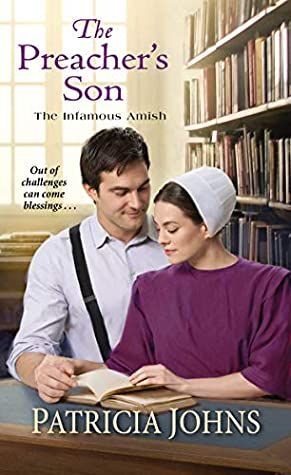
This is going to be a long review because I had a lot of thoughts about this book, so if you just want to cut to the chase I’ll tell you the conclusion first: I really loved this book, and if you like “clean” or “sweet” romances with good character development and a bit of depth to them, you will probably like it too. The “infamous Amish” of the title are the Yoder family, whose adult children suffer shame and distrust as a result of their father Abe’s crime. Abe’s son Isaiah tries to rebuild his reputation and carve out a place for himself while trying not to fall in love with Bethany, the girl his friend Micah abandoned when Micah left the community for the “Englisher” world outside.
That said, let’s get into this in a bit more depth and explore why I loved this book so much when it’s a genre I don’t normally read.
I read romance novels so rarely that my blog tags don’t even include a Romance category (they just go under “Fiction: general”). When I do read a romance it’s usually because it’s got an unusual perspective or something to give it a bit of edge, like Casey McQuiston’s fresh and fun LGBTQ romances, or Denise Williams’s How to Fail at Flirting which I picked up after reading an interview with the author while I was looking for fiction by Black women writers. All of those were fairly “spicy” romances — a bit steamier than I usually enjoy, to be honest, although great in other ways — but they did make me think about when I do and don’t like a romance.
The fact is, romance novels, like all genre fiction, have a formula. Boy meets girl (or boy meets boy or girl meets girl), there is an attraction, there are obstacles, and by the end the obstacles are overcome and the couple are together. Real romance fans, like real mystery fans who know that the detective will solve the murder in every book, love that predictability. I … don’t, usually. In this novel, you know from the first chapter that Bethany and Isaiah will end up together (this is not a spoiler; again, this is the format of romance novels) and it’s usually hard for me to be engaged with the process when, as in many novels, the “obstacles” that keep the couple apart are cobweb-thin and could easily be settled by a couple of good, honest conversations. However, I was completely drawn in by The Preacher’s Son and I think it’s interesting to analyze why.
The Preacher’s Son belongs to the incredibly popular sub-genre of Amish romances, which fall within the broader genre of clean, sweet, or inspirational romances, where a shared (Christian) faith in God is presumed, no sex happens on the page, and the main characters do nothing more than kiss before their happy ending.
I’ll be even more honest: not only am I not a regular romance reader, I’ve been even more wary of Amish romances than I am of most, and I would never have picked this one up if it hadn’t been written by someone who’s been a good Internet Writing Friend of mine for many, many years. I’ve always felt that the Amish romances (which are never written by actual Amish writers as far as I know, though some writers, like Patricia Johns, are Mennonite or have a Mennonite family background so they are at least Amish-adjacent) somehow teeter on the brink of voyeurism about a marginalized group that is not speaking for itself in this genre. At the same time, they may idealize a subculture that, while we might admire its commitment to simplicity and nonviolence, also celebrates deeply-entrenched patriarchy, distrust of outsiders (including other Christians), and the cruel practice of “shunning” those who leave Amish communities.
I think the appeal of an Amish romance is that it’s a bit like a historical romance (well, not Bridgerton, but lots of them) in that standards of sexual behavior in the Amish community, as in some periods in the past, require couples to remain chaste before marriage, so you can have that “sweet” romance with all the yearning and none of the sex. However, unlike a historical, an Amish romance sets this innocence in the context of a world where the characters do have other choices. They all know that there is a world just outside their doors where couples date, have sex before marriage, live together, etc. So there is a tension there, and I don’t know if most Amish novels fully explore that tension, but The Preacher’s Son does, and that’s what kept me going. I didn’t keep turning the pages to find out if Bethany and Isaiah would end up together — despite some well-done twists and turns in the road, that conclusion was foregone. Rather, I kept turning the pages to find out how two young people who love their Amish community and way of life, yet have begun to see the flaws and hypocrisy within that community, will come to terms with that knowledge.
Regular readers of tihs blog know that I’m always on the lookout for writing about faith that fully represents the life of faith in all its complexity — that paints communities of faith honestly as places that can be wonderfully nurturing and supportive, yet also incredibly cruel and restrictive. My gold standard for this has always been Chaim Potok’s ; recent examples of novels that I’ve seen handle this well are Yaa Gyasi’s Transcendent Kingdom and Joan Thomas’s Five Wives, and I’ve had my own attempt at it in writing Prone to Wander. It’s a tension you often find well-expressed in memoir and very occasionally in literary fiction. But in mainstream popular fiction, I’ve generally found that questions of faith and religion are either completely ignored (or used as cultural window dressing with little real engagement) or else religion is portrayed as uncritically good, as is the case in most of what’s marketed as “Christian fiction.” (Interestingly, there is good popular fiction about non-Christian communities that seems to wrestle more honestly with the complexities of religion: Uzma Jalaluddin’s novels about young Muslim-Canadians — which could also be described as romance novels, come to think of it — are good examples).
But that honest wrestling with the complexity of a faith tradition is what I found in The Preacher’s Son. Bethany wants to be a good Amish wife, but chafes against the way her community will judge her for having strayed outside those boundaries. Isaiah recognizes the narrowness and hypocrisy of some of the elders he has looked up to and respected. Bethany’s ex-fiancee Micah is by no means an admirable character, but when he talks about the faith and welcome he has found in the Mennonite community that took him in outside the strict borders of the Amish world, you can see that he’s found something genuine there. The novel refuses to join in the Amish condemnation of the outside world, yet also respects those who choose to remain within that world — accepting that tension and refusing to resolve it in an easy final chord. There’s a happy ending of course — but it’s an ending that acknowledges that the characters have complicated choices to make and the path ahead of them is not always clear.
I have no idea whether many Amish romances write about faith with this level of honesty and complexity, or whether my friend Patricia Johns is just an exceptionally good romance writer. I do know that I will be following the further adventures of the “infamous” Yoder family in the sequel, The Preacher’s Daughter, and the upcoming third volume Loving Lovina.
January 18, 2022
The Dry, by Jane Harper
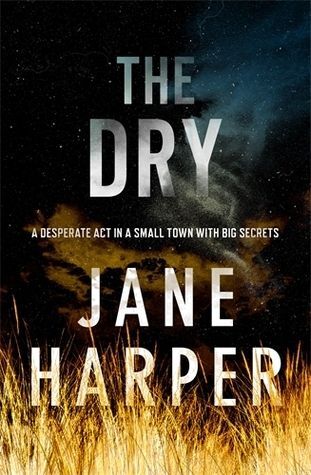
This was another quick read, a highly engrossing murder mystery set in a small Australian town during a drought. In what appears to be a horrific murder-suicide, a husband, wife, and child are found shot to death. Police officer Aaron Falk, who investigates financial crimes and definitely not homicide, returns to the hometown he left years before. The dead man who appears to have killed himself and his family was Falk’s childhood best friend, and his parents beg Falk to stay in town for a few days to investigate their son’s death and try to clear his memory. Because there are just a few hints that this murder-suicide may not be as clear-cut as it seems … and also that it may be related, somehow, to another suspicious death 20 years earlier, a death that still haunts Aaron Falk.
Tense, suspenseful, and very evocative of a community in the grip of a killer drought, The Dry was hard to put down.
January 16, 2022
The Stolen Ones, by Ida Linehan Young
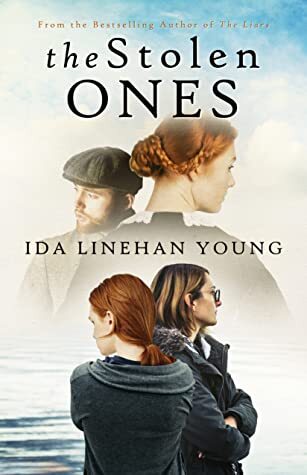
This is the first Ida Linehan Young novel I’ve read, even though we work in a similar field — Newfoundland historical fiction — and I picked it up mainly because it’s a contender for this year’s NL Reads competition and I usually try to read all the NL Reads books.
This novel moves back and forth between past and present. The present-day story is that of Darlene and Tiffany, a middle-aged mother and her 19 year old daughter from Boston. Darlene’s own mother, who died of Covid-19 in 2020, had begun a search through online geneology/DNA websites for the family history that these three generations of strong, resilient women are lacking, and found ties to a family in Newfoundland about which they know nothing. When travel restrictions lift to allow them to visit Newfoundland in summer 2021, they trace those roots to a family reunion/birthday celebration for 101-year-old woman who may or may not be a relative.
The historical story, unfolded through chapters set in the late 19th/early 20th century as well as through journal entries that Daphne and Tiffany are given to read, tells the story of Mary Rourke and Peter Nolan, childhood sweethearts who rediscover each other and marry in a small outpoart in the late 1800s. Apparently Peter, Mary, and many of the characters in this historical story appear in the author’s last three novels, which made me feel at some points like I was trying to catch up on a story from which I’d missed important background details. The timeline of the historical story was also a bit confusing, as the dates on the chapter headings seemed to jump back and forth in ways that didn’t make sense narratively and made me want to check a paper copy of the book to be sure there wasn’t an error in the e-book I was reading. Some of the big plot points in the historical narrative did not feel fully resolved, but might have made more sense if I’d had the context of the previous three books and known more about the characters. Despite this, I enjoyed Peter and Mary — especially Mary, a pioneering woman doctor at a time when few women got the chance to be qualified in that profession — and their world.
However, I enjoyed the present-day story best, especially the way it was set agains the pandemic background. The idea of the family having a huge blowout for their matriarch’s 101st birthday in 2021 because they couldn’t have a party in 2020 rang very true (although I was a bit worried about their 300-person celebration — even in summer 2021, there were many limits here on gathering sizes, and I feel like the folks in the book may have exceeded them!). I liked Daphne’s uncertainty about whether she was really a part of this family, since the family ties are not explained/discovered until the very end, and her sense of doubting whether or not she “deserved” the open-arms welcome from her Newfoundland family felt very believable for this character and what we’ve learned about her background.
In closing I’ll just add that I came into this year’s NL Reads as a reader with a strong bias in favour of one of the selected books; I’ve now read 3/4 and have one to go so will reserve my recommendation for a winner until I have read all four! As always, this is a great program for raising awareness of local books and I encourage all NL readers to check out all the selected books.
Tell Me How to Be, by Neel Patel
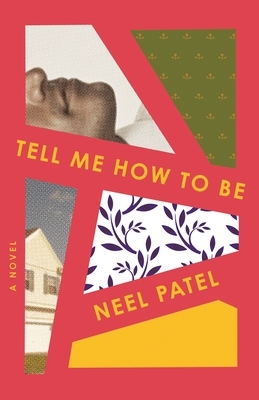
This was another of those “devour it in a day” books. I fell right into this story and didn’t emerge for a breath until it was finished (well, I did fall asleep at about 1 am, but then woke up at 7:30 and finished reading it).
Renu is a middle-aged widow living in a small city in Illinois, having emigrated to the US from London (she is originally Indian from Tanzania and went to university in England) with her doctor husband Ashok. There she raised two sons, but with Ashok dead and her sons grown up, she has sold the house and plans to return to England. She invites her sons home for a puja to mark the one-year anniversary of their father’s death, and also to help her pack up their childhood home and move out.
Akash is Renu’s younger son, always eclipsed by his older and more successful brother who followed in their father’s footsteps to become a doctor. Akash is gay, but not out to his family or anyone back home; he’s an alcoholic whose drunken mistakes have caused his family a lot of heartbreak; he’s an aspiring but as-yet unsuccessfuly R&B songwriter who lives in LA being supported by an older boyfriend that he doesn’t really love, but relies on. It’s not the ideal time for a family reunion.
The story is told in alternating chapters from both Akash’s and Renu’s points of view, and I loved both of them. They are both such flawed, hurting people; both of them have made big mistakes and neither is consistently likeable but they are believable and I empathized with both and wanted them to be happy. Through the course of the few days Renu and her sons spend closing up their old home, both Renu and Akash have the opportunity to reconnect with a lost love from the past — someone who, for each of them, has kept them stuck in the past of “what might have happened if …?” Both stories were poignant and, to me, completely engaging.
This novel’s insightful exploration of the immigrant experience, racism, homophobia, and so many other “big issues” is focused through the precise lens of this one family, this mother and son, their specific experiences — and I believe making big issues personal is what great fiction does best. This is great fiction. The novel ended in a satisfying place as well — no happily-ever-afters, and in each of the two storylines I felt there was one important thread left unresolved — but then, isn’t that like life? I really, really enjoyed this book.
January 13, 2022
Unreconciled, by Jesse Wente
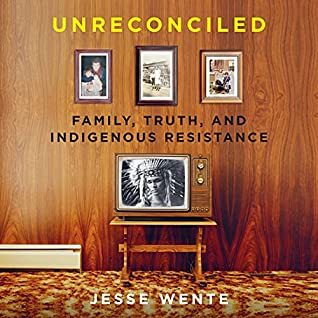
I enjoyed and learned a lot from Jesse Wente’s memoir, read by the author on audibook. Wente tells the story of his own family background, childhood, and youth, and his involvement in the Canadian arts scene, starting as a film critic for the CBC (he is now chair of the Canada Council for the Arts as well as the first director of the Indigenous Screen Office). As an Ojibwe person of mixed Indigenous and settler heritage who did not grow up on a reserve, he reflects on the lifelong self-doubt about whether he was “Indigenous enough” or “the right kind of Indigenous” to be able to speak for and about Indigenous people in the Canadian cultural landscape. I found it really insightful that he places this self-doubt in the context of the realization that he is exactly the kind of indigenous person that the Canadian state was trying to produce through the residential school system that Wente’s grandmother attended — assimilated and distanced from his people’s culture and traditions. As someone who has worked hard to reconnect with his heritage, Wente is a good position to be able to talk about the impacts of generations of abuse by the Canadian government against Indigenous people and the Indigenous resistance to that abuse.
He’s also well-poised as a film critic to talk about portrayals of Indigenous people in the media, and I learned a lot from those parts of the book. I particularly learned from his thoughts about being “tokenized,” with the example of what happened to his role at the Toronto International Film Festival, and to his reflections on cultural appropriation. As a settler-writer who thinks about these issues a lot, I now have a lot more to think about thanks to Jesse Wente.
While this memoir doesn’t pack the literary or emotional punch of something like Alicia Elliot’s A Mind Spread Out on the Ground, it is a clear, straightforward and thoughtful story of one Indigenous man’s journey to understanding his own identity and applying that understanding to our culture. It’s well worth a read (or a listen).
January 10, 2022
Bewilderment, by Richard Powers

Apparently this was a hugely successful book last year shortlisted for some major awards, but it would have flown completely under my radar if not for a glowing recommendation by a good friend whose taste in books I trust. Even at that, I shied away because the blurb made it sound a tiny bit futuristic and dystopian and, well, we all know where I stand on that. In fact, what might be worse, it is actually set in our present-day, real world, with only a few very slightly heightened details to throw the dangers we live under in high relief (in this novel, the unnamed but extremely Trump-like US president contests the results of a “fraudulent” election loss, and is successful in overturning the election and staying in office — so that’s about how close to reality the novel is).
But this is really a novel about the present world, in all its beauty and with all its flaws, and at the heart of it is the relationship between a father and son. Theo is an astrobiologist who models what life on other planets might be like; Robin is his neurodivergent nine-year-old son who can barely cope with the harsh realities of life in this world.
The novel is beautiful, lyrical, exhilarating … and heartbreaking. I knew this was not going to be the kind of novel that would have a simply happy ending: the reality it explores — how to survive, and raise a child, and be a sensitive and empathetic human in a hideously broken world — is far too complex for that. And yet … I had my difficulties with the ending, and not just because it was heartbreaking. I can’t say more without spoilers, although if anyone else who’s read it wants to defend the ending and say it was the perfect way to close this book, I will gladly discuss it in comments. Definitely, definitely read this book. It’s beautiful and thought-provoking and lovely to read and challenging. But expect to emerge from it a little bit battered. I did.
January 8, 2022
Midnight Chicken, by Ella Risbridger
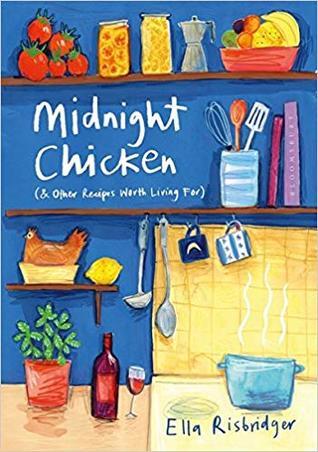
This is a cookbook. It’s not even a particularly useful cookbook for me, although it does have some lovely recipes one or two of which I might try. It’s not especially useful because:
The author is English, so all the amounts are in metric, and like most Canadians of my generation, I drive and weather in metric and cook in imperial, so I would have to convert everything to follow a recipe.Ditto on being English — lots of ingredients I don’t recognize or can’t get here.I have it as an e-book which is not the best format for kitchen use.Also, I wouldn’t normally count a cookbook as a book I’d “read and would review on this blog. I’d just flip through it and look up recipes I like. However, this is the sort of cookbook where every recipe is introduced with a long, thoughtful introduction that tells us something about the cookbook-writer’s life and what this recipe means to her, so it reads a bit like a memoir studded with gorgeous descriptions of food, even though it is mainly a cookbook.
I bought it for the memoir. I first became aware of Ella Risbridger when I began following her then-boyfriend, English writer John Underwood, on Twitter: he was tweeting about being a young person (they were both in their 20s at the time) with cancer. John wrote insightfully and hilariously about cancer, and Ella, his girlfriend who was writing a cookbook, was always there in the margins of his pieces, and like many readers I followed the story with interest, hoping for the best.
The best was not to be. John Underwood (always referred to in this book as “The Tall Man”) died in 2018, and the next year Ella published this cookbook, with many of the recipes and stories drawn from their years together. The book wasn’t really on my radar at the time; I was sad to hear of John’s death and then sort of forgot about it. But then Ella started turning up as a regular guest on the podcast Sentimental Garbage which I love to listen to and which is hosted by her good friend Caroline O’Donoghue, and Ella just is so wise and thoughtful and witty that I thought, I would like to read some of her story in her own voice, even if I have to read a bunch of recipes to get through it.
For a cookbook, this makes surprisingly good reading, and I’ve categorized it as a memoir, because it sort of is. I really loved this, and I might even make her midnight chicken, though I’ll probably fudge the conversions a bit.
Saint Mazie, by Jami Attenberg
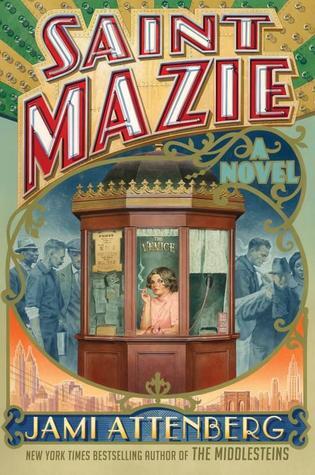
This is a fictional book about a real woman. Not a whole lot is known about the real Mazie Gordon-Phillips, except for an 1940 New Yorker essay that profiled this woman who worked at the ticket booth of a movie theatre she also owned, and was known for walking the streets of the Bowery at night and giving away money and other forms of help (but mostly just money) to homeless men. From this single essay and the handful of other facts known about the real Mazie, author Jami Attenberg has created a fictional book that reads like an oral history, stitching together interviews and diary excerpts (all fictional) that weave in and out through the little that’s known of the real Mazie’s story. She emerges as an unforgettable character against the backdrop of working-class, early 20th century New York City. I read this book in a day and loved it.



